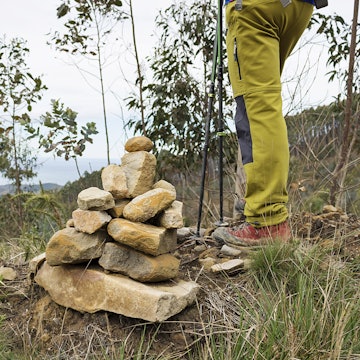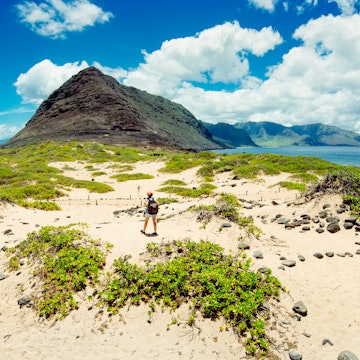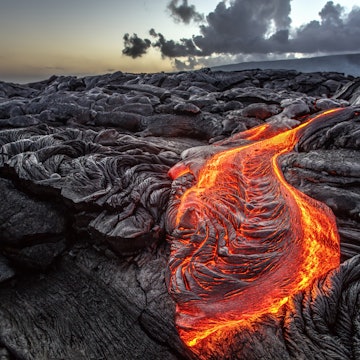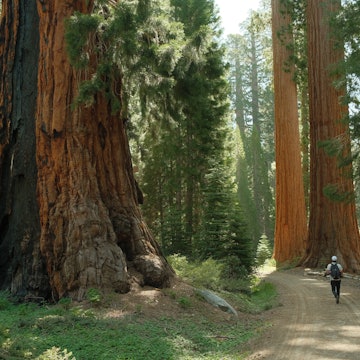

Inside the Thurston Lava Tube in Hawai'i © Andre Nantel/Shutterstock
When it comes to mysterious, eye-catching natural wonders, it's hard to beat caves and caverns - those dark spaces glittering with geologic oddities, unusual lifeforms, and winding passages that are both curiosity-inducing and a little heart pounding. But some have an added element of excitement, capturing a frozen moment in time unchanged for thousands of years – and those are lava tubes.
Unlike most caves, which form when water dissolves softer rock over a long period of time, lava tubes are created through a far more volatile, sudden process. These special kinds of volcanic caves are created when molten lava rushes and bubbles through the earth, carving out an opening. The crust hardens as it cools and the interior lava drains away through the cracks, leaving behind a hollowed-out area.
Lava tubes are a record of the past, and they give visitors a chance to travel back millions of years. These volcanic caves are hidden all over the world, but we picked four favorites that are especially good examples of just how massive eruptions can be. So go ahead, take a walk on the wild side and go with the flow to where, yes, the floor was was lava once upon a time.

Boyd Cave – Bend, Oregon
There's a good reason that Bend, Oregon is known as the outdoor playground of the west – many of them, actually. People flock there every year to go fishing, rafting, skiing, and rock climbing. The area around Bend is also home to a series of lava tubes – like much of the Beaver State, central Oregon has a volcanic past. Many of the caves were stumbled upon by early pioneers in the late 1800s, however archaeological evidence suggests Native American tribes knew about them far earlier.
Boyd Cave is located less than 15 miles outside of Bend. To reach the interior, you’ll walk about 20 feet down a steep steel staircase. Once you arrive, the lava tube is a steady 45 degrees and mostly dry year-round. The cave is unlit and the ground is uneven in areas with jagged rocks flanking parts of the pathway, so be sure to wear sturdy footwear and bring a light source. Once you round the first bend (no pun intended!) from the opening, you’ll find yourself plunged into darkness. Headlamps are preferable to flashlights, since it’s safer to have your hands free.
No one knows for certain how old Boyd Cave is, but the professional guides at Bend's own Wanderlust Tours estimate it to be at least 70,000 years old. The floor, walls, and ceiling all offer great views of solidified lava drips and it’s easy to imagine the hot, molten flow in motion. If you shine your light on the walls, you’ll catch the purplish hues of colored minerals. Sharp-eyed explorers may also catch sight of a Little Brown Bat sleeping above them.
The tube is about 1,800-feet long and there’s plenty of clearance to walk most of the way, although if you’re feeling adventurous, you have the option to crawl on your belly for the last few feet. There is only one access point to Boyd Cave so once you reach the end, you’ll turn around and make your way back towards the stairs. Boyd Cave is open to the public during daylight hours all year round.
Leviathan Cave – Chyulu Hills National Park, Kenya
One of the least-visited parks in Kenya, Chyulu Hills National Park is known for its landscape of sloping hills and extinct volcanoes. While other parks in Kenya are popular destinations for wildlife safaris the best-known attraction here is the largest-known lava tube in Africa, the aptly named Leviathan Cave, also known as the Kisula Caves. Discovered in 1975, the tube is of indeterminate age and broken up into different segments: Upper Leviathan and Lower Leviathan, together the two run for approximately seven miles.
Leviathan Cave is home to several species of bat. The journey through the cave is eerie as you pass by large animal skeletons, which are not to be touched. Because Leviathan presents these special challenges, safety equipment is mandatory and visitors are only able to enter the cave with a guide or ranger with advance permission from the warden. Keep in mind, too, that Leviathan is unlit and the floor is wet and uneven. There are places where tight squeezes and climbing over steep rocks are involved. Be sure to use a headlamp instead of a handheld light source. It’s slippery in spots so sturdy footwear is a must.

Nāhuku (Thurston Lava Tube) – Hawaii
Millions of years ago, Hawaii rose from the sea, birthed by the power of volcanic activity. Today, the island is as famous for its volcanoes as it is for being home to some of the most beautiful beaches in the world. Hawai’i Volcanoes National Park is one of the few places on earth where visitors can see a snowy mountain top and boiling lava on the same day. It’s also a great place for spelunking.
At 500-years old, the park’s Thurston Lava Tube is practically a baby as far as volcanic caves are concerned. But it's been a tourist attraction for over 100 years – Nāhuku, as it is called by native Hawaiians, was "discovered" by white newspaper publisher Lorrin Thurston in 1913. Although there are multiple lava tubes on the island, Nāhuku is among the easiest to get to and it’s a great lava tube for beginners. It’s tall and wide enough to walk through without crawling or touching the sides and the ground is paved and fairly even. It almost looks like it was drilled with professional tunnel boring equipment, though if you look closer the walls and ceiling still provide excellent examples of mineral coloring and stunning lava drips.
The cave is illuminated by LED lights from 10am to 8pm, although there are still unlit parts of the cave for those who want a more naturalistic experience. Be sure to bring your own light source and sturdy footwear to explore the dark parts of the cave, as the terrain is less even there. Rain is common in this area of Hawaii and lava is porous, which means Nāhuku is frequently wet. You may step through puddles and feel drips of falling water, so be sure to dress accordingly. The tube is 600 feet with a separate entrance and exit from the walkway to a lush, tropical rainforest waiting to be explored on the other side. Nāhuku is open year-round.

Manjanggul Cave – Eastern Jeju-do, South Korea
Manjanggul Cave is part of a system of lava tubes believed to have been formed between 200,000-300,000 years ago. The cave turns and winds underground like a snake for just over eight miles, although less than a mile is open to the public.
A wooden staircase leads you into the cave and the pathway is lit, however, it’s still a good idea to carry your own light source since the light is extremely dim in certain places. Shining your light directly on the ceilings and walls will also bring out the variously colored minerals on the lava formations surrounding you. The ground is bumpy and uneven, so sturdy footwear is a must. The cave can be wet as well, so be prepared to walk through pools of water and drips of water from the ceiling, especially if it’s been raining.
Manjanggul Cave is spectacular – 75 feet across at its widest point and reaching heights as tall as 100 feet. The journey is as educational as it is magnificent, with signs installed along the way to explain the types of lava formations you’ll see along the way. The highlight of the lava tube is the largest known lava column on earth, at 25-feet tall. Manjanggul Cave is also home to 30,000 bats and other creatures such as the large Jeju cave spider. There is only one entrance and exit to the cave, so you’ll retrace your initial steps when you exit. Manjanggul Cave is open all year.
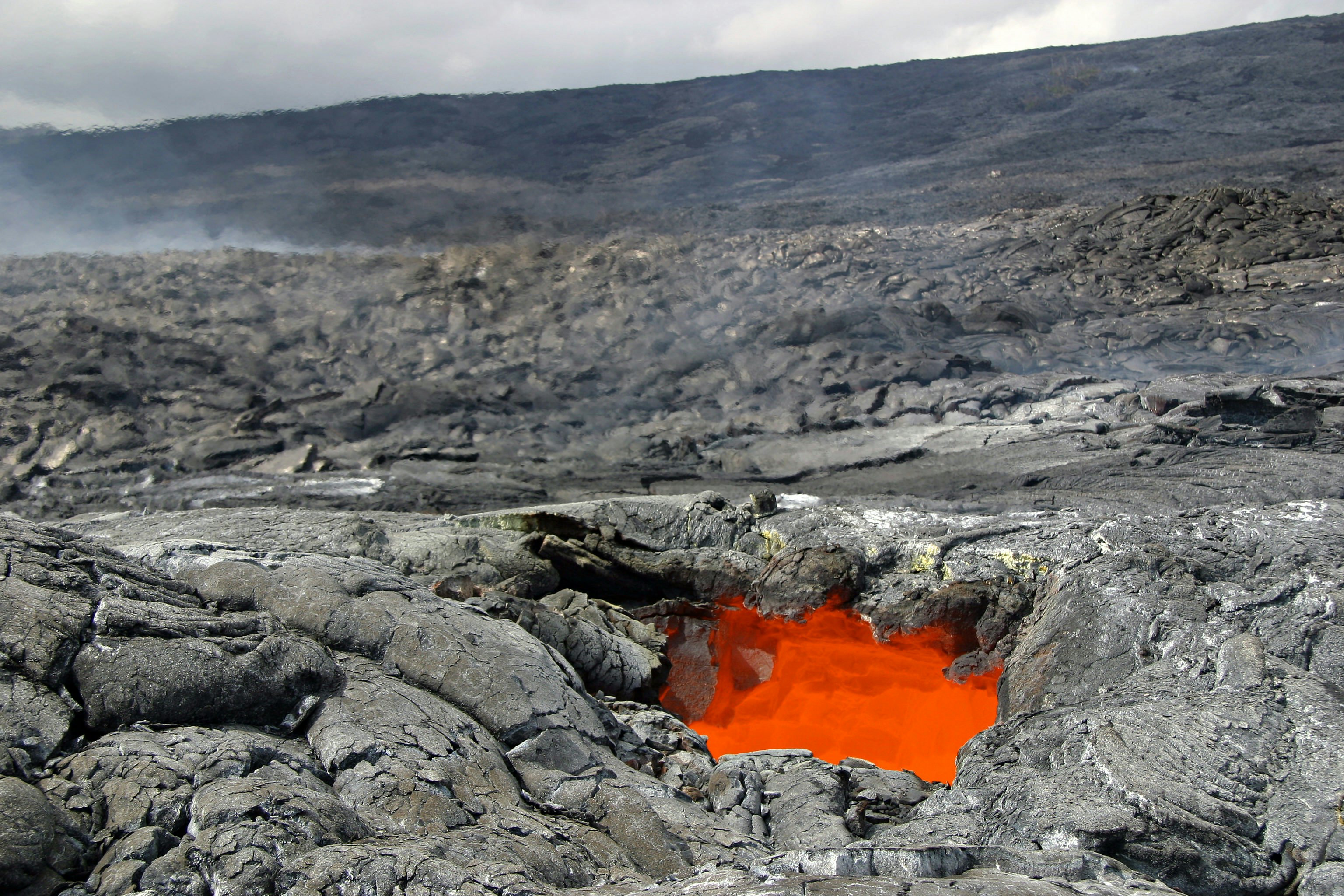
Tips on visiting lava tubes
If you want to explore a lava tube, Dave Nissen – the founder and owner of Wanderlust Tours – says there are a few things to remember.
“Leave the cave the way you found it. Don’t take anything out of a cave, don’t leave anything in a cave. Don’t eat in caves. Be aware of creatures which call the cave home – spiders, worms, bats, other insects, fungus – take every precaution to not touch or harm that which lives in the cave.”
He also cautions that in North America, it’s important not to wear clothing or carry anything that’s been in another cave without sterilizing it, including shoes, hats, and backpacks, to prevent spreading the fungus that causes white-nose syndrome, a disease that doesn’t affect humans but sadly, has killed millions of bats.
When planning for a casual day of spelunking (a fun word for exploring caves), you won’t need much in terms of equipment. Nissen recommends a helmet, headlamp, and clothing appropriate to the temperature and moisture content of a particular cave.
“The more knowledge you can acquire about the cave you hope to visit, the better- know what you are getting into," Nissen says. "Let someone know where you are going. Ensure the integrity of your equipment. If you see a lot of rat or mice droppings, leave the cave.”
Exploring lava tubes can be an amazing experience for anyone interested in history and geology – so grab your head lamp and get in on the fun.
You may also like:
6 Oregon hot springs where you can melt your troubles away
Essential Jeju-do: top 10 activities on Korea’s tropical island
Climbing, trekking, kitesurfing, mountain biking and more: Kenya beyond safaris






